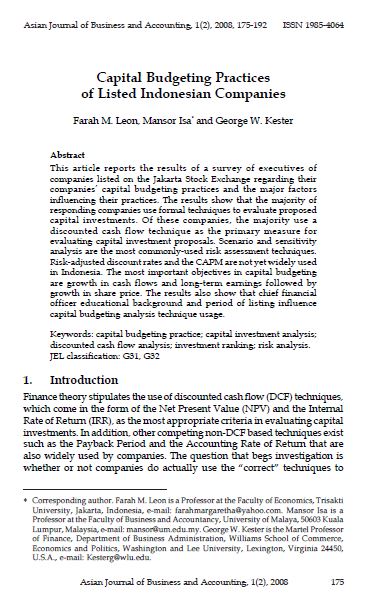Capital Budgeting Practices of Listed Indonesian Companies
Main Article Content
Abstract
This article reports the results of a survey of executives of
companies listed on the Jakarta Stock Exchange regarding their
companies’ capital budgeting practices and the major factors
influencing their practices. The results show that the majority of
responding companies use formal techniques to evaluate proposed
capital investments. Of these companies, the majority use a
discounted cash flow technique as the primary measure for
evaluating capital investment proposals. Scenario and sensitivity
analysis are the most commonly-used risk assessment techniques.
Risk-adjusted discount rates and the CAPM are not yet widely used
in Indonesia. The most important objectives in capital budgeting
are growth in cash flows and long-term earnings followed by
growth in share price. The results also show that chief financial
officer educational background and period of listing influence
capital budgeting analysis technique usage.
Keywords: capital budgeting practice; capital investment analysis;
discounted cash flow analysis; investment ranking; risk analysis.
JEL classification: G31, G32
